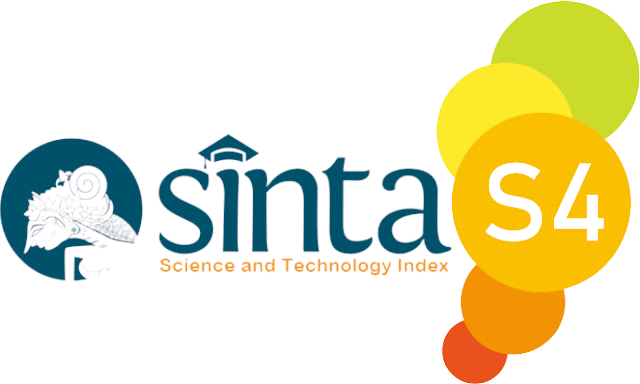INTEGRATED DOMESTIC WASTE MANAGEMENT IN ACCORDANCE WITH KAMPUNG IKLIM PROGRAM AT WARAKAS VILLAGE, TANJUNG PRIOK JAKARTA UTARA
Abstract
Warakas Village is located in Tanjung Priok District, North Jakarta, with a population of 60,122 people and an area of 100.4 Ha. The increase in population and consumption patterns that continue in society can lead to the amount of landfill waste. Stunting toddlers have become a serious concern for the government. The real impact of stunting is that it can reduce intelligence in children, as the next generation of the nation. The Program conducted in the Warakas Village is to add insight and knowledge, as well as improve skills from environmental, economic, and health aspects, especially in the case of stunting by prioritizing integrated waste/garbage management with prospects for creating innovations in the field of feed and fish farming catfish. The Program is implemented using a participatory approach and an adult learning system, both in training by inviting expert speakers and assisting in the application of the knowledge provided. The benefits obtained are increasing the skills of residents in developing the ability to make solid and liquid fertilizers, plant cultivating with hydroponic system, and production of fish feed independently. All of these activities are interrelated, and can become a place/forum for discussion between residents and other stakeholders. In the health sector, this activity is believed to be able to meet the need for animal protein sources, especially in the Stunting Prevention Action activities which prioritize animal protein intake. Lastly, in the environmental field, waste management activities can support environmental quality improvement by reducing waste piles that are disposed of at garbage dump.
Downloads
References
Arthatiani, F. Y., dan Zulham, A. (2019). Konsumsi Ikan Dan Upaya Penanggulangan Stunting Di Provinsi Daerah Khusus Ibukota Jakarta. Buletin Ilmiah Marina Sosial Ekonomi Kelautan dan Perikanan, 5(2).
Badan Ketahanan Pangan. (2012). Roadmap Diversifikasi Pangan 2011-2015. Jakarta (ID): Kementerian Pertanian Republik Indonesia
Cahyono, B. (2012). Peran Modal Sosial Dalam Peningkatan Kesejahteraan Masyarakat Petani Tembakau di Kabupaten Wonosobo. Proceedings of Conference In Business, Accounting and Management (CBAM): Vol. 1 No. 1
Darusman, D. (2000). Forest Community Pro Environmental Management, http://www.ampl.org
Dermawan, A., Mahanim, M., dan Siregar, N. (2022). Upaya Percepatan Penurunan Stunting Di Kabupaten Asahan. Jurnal Bangun Abdimas, 1(2), 98-104.
Kemenkes, R. I. (2018). Hasil Riset Kesehatan Dasar (Riskesdas) Tahun 2018. Kementerian Kesehatan Republik Indonesia: Badan Penelitian dan Pengembangan Kesehatan.
Lestari, F. L., Yuniarti, S., & Abidin, Z. (2013). Effect of Feed Formulations Made from Fish Meal, Corn Flour, Refined Bran and Tofu Dregs on the Growth of Tilapia (Oreochromis sp.). Marine Journal 6 (1): 36-46. ISSN: 1907-9931.
Masruroh, M. 2021. Bank sampah solusi Mengurangi Sampah Rumah Tangga (Studi Kasus bank Sampah Puri Pamulang). Masyarakat Madani: Jurnal Kajian Islam dan Pengembangan Masyarakat, 6(2), 48-69.
Nirmalasari, N. O. (2020). Stunting Pada Anak: Penyebab Dan Faktor Risiko Stunting Di Indonesia. Qawwam, 14(1), 19-28.
Palupi, N. P. (2015). Ragam Mikroorganisme Lokal Sebagai Dekomposter Rumput Gajah (Pennisetum purpureum). Ziraa’ah Fakultas Pertanian Universitas Mulawarman Samarinda Volume 40 Nomor 2, Halaman 124.
Copyright (c) 2023 Nonon Saribanon, Noverita, Bhakti Nur Avianto, Sara Pebrina, Astri Oktavina

This work is licensed under a Creative Commons Attribution 4.0 International License.







